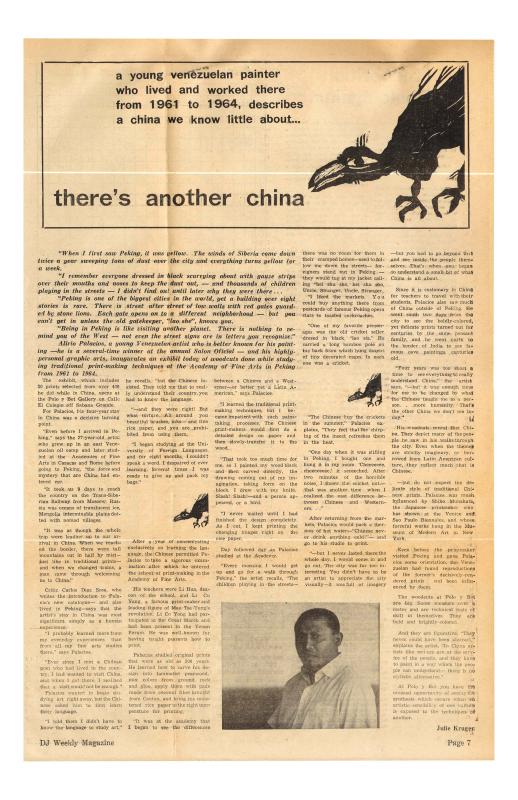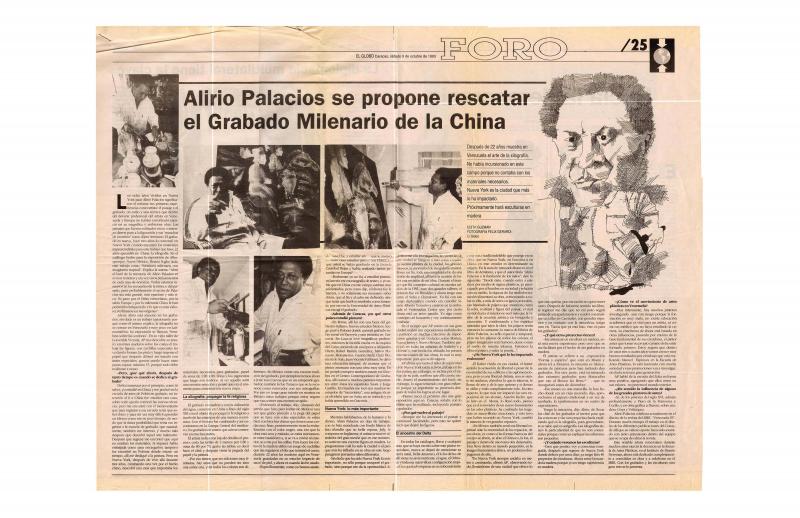Between 1994 and 1999, the printmaker Alirio Palacios (1938–2015) worked with woodcuts (learned in China during a study trip from 1962?65). He also experimented with prints executed on sheets of cement which Eugenio Montejo dubbed “concretografías.” Montejo wrote about this in a catalogue for an exhibition that brought together work created in both techniques, suggesting links between the artist and the work he created as well as pointing out milestones in his life. The tie postulated by Montejo between the life and work of the painter Armando Reverón (1889–1954) and Palacios is the essential contribution of this document. This hypothesis provides a perspective on the work that is not particularly evident, especially given the fact that their respective art lives did not overlap in time. Montejo set forth his belief that “when the time comes to establish the coordinates of his own path, any Venezuelan artist (…) would find in Reverón a standard to emulate.” That is why linking him with Palacios occurred to the writer as a stimulating exercise. Montejo also refers to the figure of the shaman as a mediator/wizard linking our conscious with our unconscious lives (another tie to Reverón). Moreover, the Orinoco Delta landscape (rivers, ravines, jungle vegetation and mud) is presented by the writer as a metaphor for our farewell to the millennium. This reference allows us to expand the panorama of his graphic work, which transcends persons, horses and dragons to delve into the dense landscape that persists in his memory. Regarding this exhibition, the artist’s remembered landscape was particularly evident in his “concretografías”.
[As supplementary reading, see in the ICAA digital archive the essay by Igor Molina “Alirio Palacios. El arte de la violencia” (doc. no. 1155701), which highlights the artist’s training in printmaking both in Poland and China; Lenelina Delgado’s article “Alirio Palacios: El Estado tiene la responsabilidad del futuro del Centro de Diseño” (doc. no. 1155596); the text by Olga González “Regresa a su país uno de los grabadores más importantes de América Latina” (doc. no. 1155203); Julie Kruger’s article in English “There’s another China” (doc. no. 1155219); Yasmín Monsalve’s review “Soy un gran aliado de mi país. Alirio Palacios expone xilografías en la Freites” (doc. no. 1155733); the review (unsigned) “La obra de Alirio Palacios llegó a Nuevo México: bajo el título de ‘Formas y espíritu’ expone 30 xilografías” (doc. no. 1155170); M. A.’s text “Los grabados chinos de Alirio Palacios” (doc. no. 1155187); Edith Guzmán’s interview “Alirio Palacios se propone rescatar el grabado milenario de la China” (doc. no. 1155809); and another essay by Montejo, “Alianza y magia de grabado y pintura. Alirio Palacios bajo la luz de Reverón” (doc. no. 1155235)].









